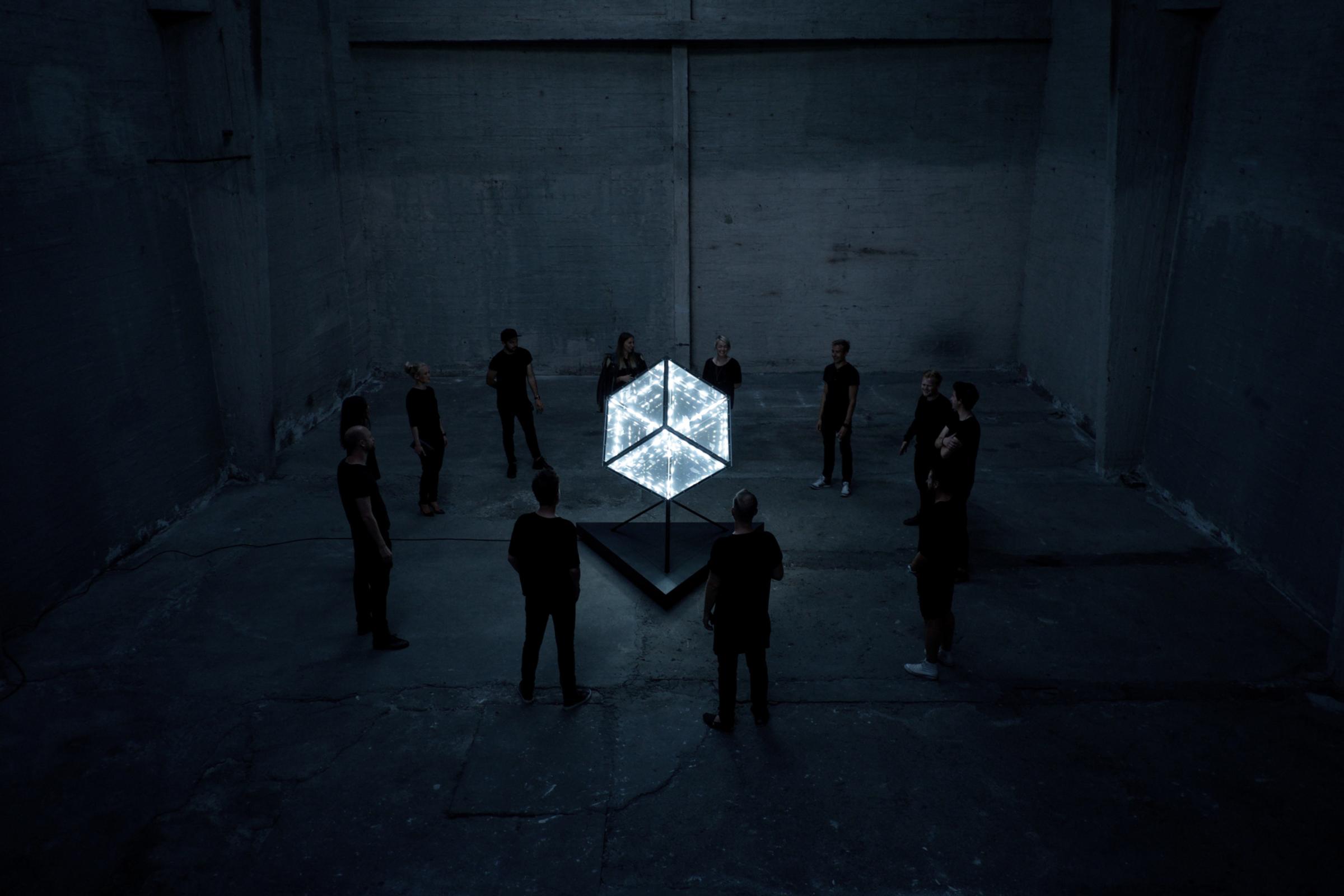C8
2016
interactive, installation
Steel, Plexiglass, LED, C++ code
Oslo
C8 is a self-commissioned artwork that explores light as a medium for manipulating perception and dimensionality. The title references both the tesseract—typically visualized as the shadow of a four-dimensional cube projected into three-dimensional space—and the cervical spinal nerve C8, which controls finger flexion in humans. This dual nomenclature establishes connections between geometric abstraction and biological function, suggesting how complex systems can be understood through their projected manifestations.
The sculpture consists of six mirror-foiled acrylic plates attached to a custom welded steel frame, creating a geometric form that reflects and refracts light throughout its structure. A total of 1,340 LEDs are mounted along the interior edges of the frame, controlled by a computer system housed in the installation's base. This technical infrastructure enables precise choreography of light sequences that travel along the sculpture's perimeter, creating the illusion of electrical impulses propagating through a three-dimensional nervous system.

Like electrical impulses traveling through biological synapses, pulses of brightness move along the outer edges of the geometric form in endlessly repeating patterns. The LED sequences create dynamic visual rhythms that emphasize the sculpture's dimensional qualities while suggesting movement through higher-dimensional space. This programmed illumination transforms the static geometric frame into a kinetic light environment that explores how temporal patterns can suggest spatial dimensions beyond direct perception.
